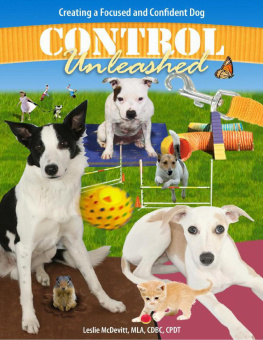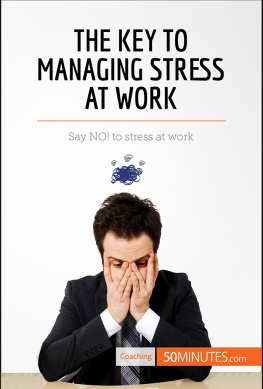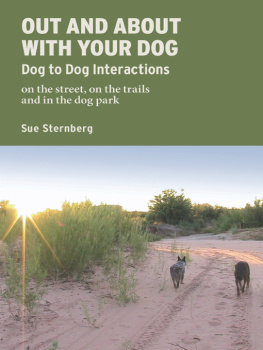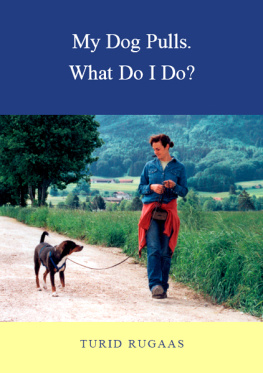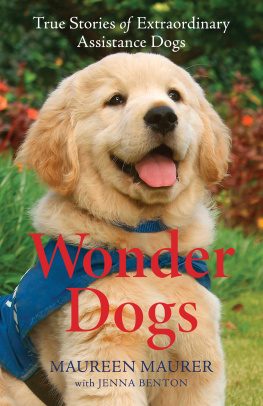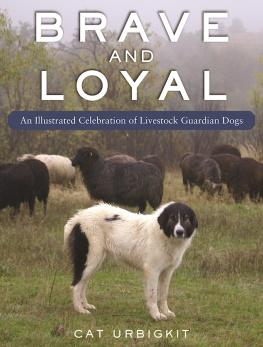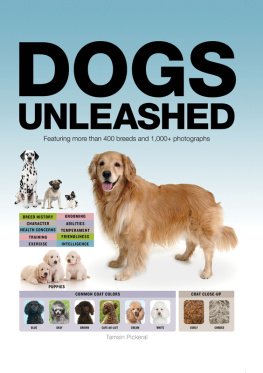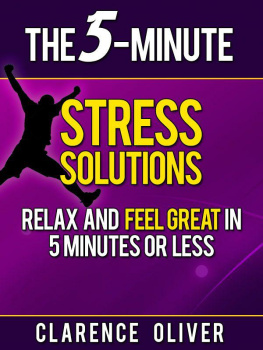
Creating a Focused and Confident Dog CONTROL
Unleashed
Leslie McDevitt, MLA, CDBC, CPDT
CONTROL UNLEASHED
CREATING A FOCUSED AND CONFIDENT DOG
Copyright 2007 by Leslie McDevitt All rights reserved. Printed in the United States of America. No part of this book may be used or reproduced in any form or by any means electronic or mechanical, including photocopying, recording, or by any information storage or retrieval system, without the prior written permission of the publisher.
For information contact:
Clean Run Productions LLC
17 Industrial Dr.
South Hadley, MA 01075-2621
800-311-6503
Website: www.cleanrun.com
Edited by Nini Bloch, Monica Percival, and Rosemarie Stein Book design and typesetting by Marianne Harris Cover photos: Action photo by Barry Rosen and still photos by Clean Run
Cover design by Alex Preiss. Agility Action photo on cover by Barry Rosen, Ain't Mutts Behavin and still photos by Clean Run.
All photographs unless otherwise noted are by Kienan Brown and Bryan Hahn, Kibrion Photography.
Trademarks: All service marks, trademarks, and product names used in this publication belong to their respective holders.
First edition
First printing 2007
ISBN 978-1-892694-17-1

DEDICATION
For Snap, little heart dog
TABLE OF CONTENTS
List of exercises
Foreword
Preface
Acknowledgments
About the author
Chapter 1 Nuts & Bolts
Is CU for you?
For instructors
Which dogs are appropriate for CU?
For agility students: Stand up for yourself and your dog
Chapter 2 Basic Concepts
A behavioral program
The principal principles
Conditioning a relaxed response
Reading your dog
Working with thresholds
The Goldilocks Rule
Using the Premack Principle to teach focus Reframing the picture
If it's not working
Chapter 3 Night One
Before the first class
Connecting with your dog requires understanding his state of mind
Twilight times
Passive attention
To leash or not to leash
Leash exercises
Default behaviors
Release cues
Reorienting points
Sacred space
I'm gonna get you!
We don't need no stinkin leashes!
But he runs off the second I unclip the leash
Leash comes off, toy comes out
Management
The Great De-bait
The ballet of teamwork
Teamwork exercise in the box
Beginning of box work
Chapter 4 Night Two
Playing with stimulation levels
Active attention: Transitioning from passive to active work Active attention exercises
Doggie Zen
Leave It
Targeting
Go to Place
Recognizing when to drop the leash Balancing environmental challenges and performance criteria Starting startline stays
Chapter 5 Night Three
Whistle while you work: Simultaneously building focus and
changing attitudes (Look at That! game) A different approach
Why do I like this game so much?
Training the Look at That! game
Giving dogs a task to focus on while working near other dogs (parallel games)
Parallel racing
Working with motion-triggered dogs Training a reactive dog to watch other dogs in motion Adding motivational cues
Chapter 6 Night Four
Whistle while you work: Increasing both enthusiasm and
focus in a distracting environment (Give Me a Break game) Sniffing is not a crime!
Teaching the dog to think through his arousal (the Off-switch game)
Impulse control and agility must go hand in paw Dealing with poor impulse control on the agility course Combining the Off-switch game with other games Close encounters (Campfire Circle game)
Chapter 7 Night Five
Working up to working loose: Increasing challenges
Prepping for even closer encounters (There's A Dog In Your Face! game)
Targeting task to perform loose around other moving dogs (Get Outs around jump standards)
Making it personal: Customizing the CU approach But he only plays at home
Chapter 8 Night Six
Raising criteria: More fast, more furious, still under threshold
Distance work (the Out 'n Mats game) Work in tight quarters (the Car Crash game)
Chapter 9 Night Seven
Next steps: Applying CU to agility contexts
Think inside the box
Guidelines for integrating CU games into daily life Dealing with the distracted
Coping with stress
Combining games to reduce stress
Help for the CU handler: Dealing with real life Chapter 10 Real Life: Snap's Progress Report The match
The first trial
The pet expo
The second trial: We got him just where we want him The third trial: Tail of a brave little munchkin Recommended Resources
LIST OF EXERCISES (IN ORDER OF APPEARANCE) Passive attention exercises
Leash exercises
Default behaviors
Release cues
Reorienting points
Sacred space
I'm gonna get you!
We don't need no stinkin leashes!
But he runs off the second I unclip the leash
Leash comes off, toy comes out
Management rules
Calm behavior opens the crate door Reorienting to your handler is the ticket to going anywhere Management for the hypervigilant dog Teamwork exercise in the box
Box work
Rate of reinforcement
Click for orienting
Box work modifications
The Pop-up game
Active attention exercises
Doggie Zen
Leave It
Targeting
Go to Place
Startline stays
Look at That! game
Parallel games
Parallel racing
Give Me a Break game
Off-switch game
Campfire circle game
There's a Dog in Your Face! game
Get Outs
Out 'n Mats game
Car Crash game
FOREWORD
Every agility instructor should read this book. With so many dog training clubs launching agility classes, instructors need clear, detailed, and creative steps for keeping classes safe while making sure that problematic dogs are not left out of the fun. ControlUnleashed addresses helping those dogs that need the outlet and benefits of agility the most but who so often, unfortunately, are the least suited for group classes.
While the book is a bible for agility clubs, its value extends well beyond the agility arena. It serves as a practical guide for owners of excitable, hypervigilant, or unfocused dogs. Control Unleashed provides a gold mine of training and behavior modification advice for any trainer or behavior counselor who works with dogs that exhibit focus and arousal problems.
In clear and readable language McDevitt presents the science of desensitization and operant conditioning in an accessible and pertinent way and thoroughly outlines training steps. Her methods are fluid and dynamic, sensible and sensitive to the needs of each particular dog. It's a pleasure to read a book that provides such a sound knowledge of learning theory but at the same time never fails to adjust techniques for individual dogs' temperaments and personalities. Anecdotes throughout the book make visual the practical applications for McDevitt's program and help the reader envision how, when, and for what types of dogs to use the exercises. McDevitt's experience and keen knowledge of dog behavior are evident throughout and ensure that even the most reactive dog can benefit from the Control Unleashed program.
Next page
